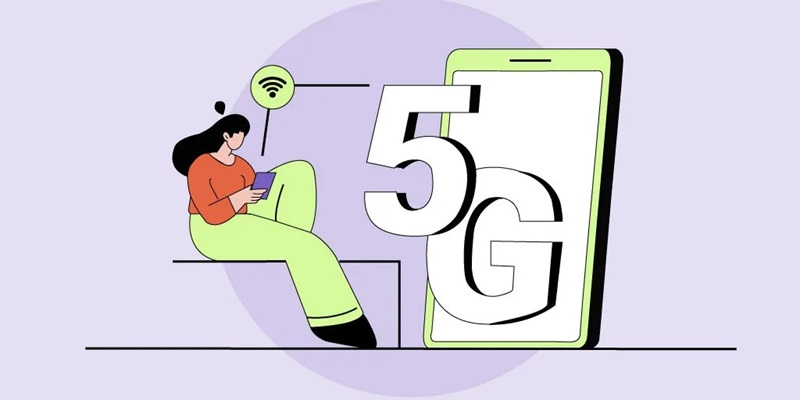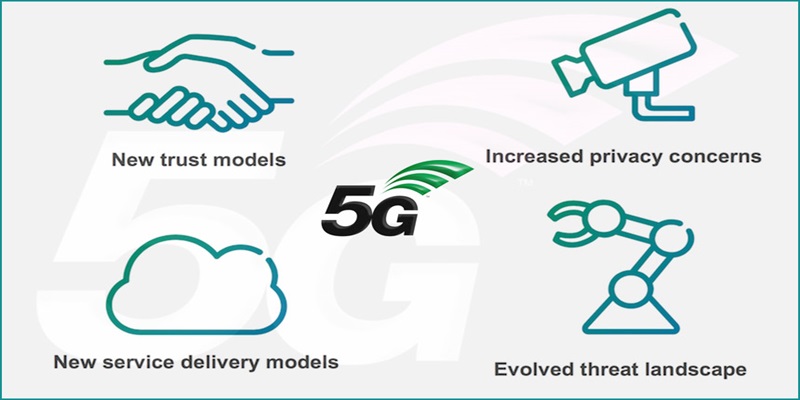The Transformative Power of 5G in Advancing IoT Devices
Author: Elison
As you move through the ever-changing technology environment, you've probably heard of 5G and IoT (Internet of Things). 5G and IoT don't coexist; they're synergistic, changing our virtual environment forever. 5G's high-speed performance and low latency capabilities drive IoT devices into new dimensions of opportunity. From smart homes to autonomous automobiles, 5G and IoT integration is creating an era of unprecedented connectivity and efficiency.
The Convergence of 5G and IoT: Opening Up New Horizons

The marriage of 5G technology and IoT (Internet of Things) is opening a new era of connectivity and innovation. With their powerful synergy, 5G and IoT will redefine device communications and device-to-device communications, opening new horizons in various industries.
Increased Speed and Trust
The high-speed performance and low latency capabilities of 5G make it a breakthrough for IoT devices. With 100 times increased data transfer capabilities over 4G, 5G can enable real-time device communications, providing split-second decision-making capabilities. With increased trust and speed, 5G is a necessity for use in scenarios such as autonomous automobiles, in which real-time processing can mean life and death.
Massive Device Connection
Perhaps 5G's greatest benefit is its ability to support a tremendous number of connected devices at once. That feature is ideal for IoT environments, in which a thousand sensors and devices must work together seamlessly. Cities, for example, can easily use increased capacity to manage traffic, streamline energy consumption, and enhance public security.
Edge Computing and AI Integration
5G's reduced latency enables edge processing near IoT devices at a larger scale. More innovative IoT implementations with edge processing and AI integration have become a reality. For instance, in factories, AI-facilitated robots can make real-time adaptations in response to information received through sensors, with increased efficiency and reduced downtime.
Faster Speeds, Smaller Delay: How 5G Empowers IoT Devices?

Record-breaking rate of Information Transfer
The 5G technology is transforming the IoT environment with its record-setting capabilities in information transfer. With a theoretical peak throughput of 20 Gbps, 5G can make IoT devices capable of sending and receiving enormous volumes of information in real-time. With such a record-setting pace, more innovative, high-facilitated IoT implementations, such as smart city and industrial automation, become a reality, with immediate processing of information a necessity.
Minimal Delay for Real-Time Action
One of 5G's biggest strengths is its ultra-minimal delay, with a reaction time of 1 millisecond at its best. With near-immediacy in communications, 5G technology is a breakthrough for IoT devices that must act in real-time, such as autonomous cars and robotic surgical instruments. With reduced lag between sending and receiving information, operations become smoother and more reliable in a variety of IoT implementations.
Increased Network Capacity
5G networks can accommodate 1 million IoT devices per square kilometre, significantly improving over their predecessors. With increased capacity, 5G networks can make IoT devices capable of exponential growth, with increased density and complexity in sensors and intelligent gadgets networks. With smart homes and big IoT implementations in industries, 5G's increased capacity opens doors for more intelligent, more extensive, and interconnected networks.
5G technology is opening a new era for IoT device connectivity, transforming them with new capabilities and use cases. This new network brings unprecedented velocity, dependability, and capacity and empowers IoT devices to converse and act in a new way.
Lightning Fast Information Transmission
IoT devices can transmit and receive information at a velocity 100 times that of 4G networks with 5G. With such a quantum boost in velocity, real-time processing and decision-making have become a reality, opening doors for use cases with immediate reaction, such as autonomous cars and remote operations in medical settings.
Massive Device Coverage
The 5G network can cover a million devices per square kilometre, significantly improving 4G capabilities. With such density, IoT networks can be installed at a tremendous level in smart cities, industries, and agricultural settings and enable thorough information collection and analysis.
Enhancing IoT Security and Trust with 5G

Securing IoT Networks
5 G technology is changing the security environment for IoT devices. With its high-class encryption methodologies and slicing capabilities, 5G empowers secure, segmented channels for sensitive IoT information delivery. With such segmentation, vulnerability to a big attack is less; even in a compromised slice, others will not suffer.
Increased Trust through Reduced Latency
The ultra-low 5G network latency is a breakthrough for IoT dependability. With 1-millisecond reaction times, 5G will make device communications near-immediacy a reality. That will matter for real-time-sensitive use cases such as autonomous cars, industrial automation, and remote surgical operations. With little to no lag, critical information will arrive and be processed in real-time, minimizing system failure and accident peril through lagging.
The Future of IoT: Unlocking the Revolutionary Impact of 5G
Transforming Connectivity
5 G technology will revolutionize the future of IoT. With its high-speed connectivity and low latency, 5G will usher in a new era of smart, real-time communicating and acting devices. It will also make smarter IoT use cases in industries, such as smart cities and autonomous cars, a reality.
Extending IoT Ecosystems
The high capacity of 5G will allow for a high density of IoT devices and, in return, enable expansive IoT ecosystems to flourish. With increased capacity, IoT in smart homes, industries, and wearables will gain a boost. With no gaps in connectivity, many devices will integrate seamlessly, creating a more extensive and innovative system with increased capabilities and usability for humans.
Driving Innovation
The future of 5G will drive IoT device innovation. With 5G, device manufacturers will have a chance to develop smarter sensors, actuators, and communications modules that can fully utilize 5G capabilities. With its technological breakthrough, new IoT use cases will become a reality, and industries will be revolutionized, changing the way humans use and respond to the environment in a new and exciting manner.
The Future of IoT Driven by 5G
As 5G networks expand, they rely on IoT technology to move quickly in industries worldwide. With IoT-connected smart cities and innovative healthcare, 5G will make new IoT use cases a reality that could not have been dreamed about in years past. With ultra-high speeds, low latency, and enormous device connectivity, new doors for using technology in your life will become a reality. Challenges will arise, but 5G will transform the IoT environment in years to come.



